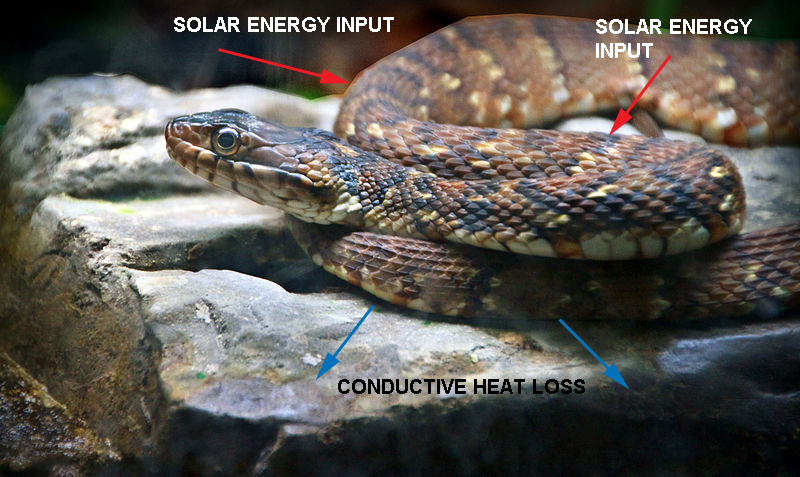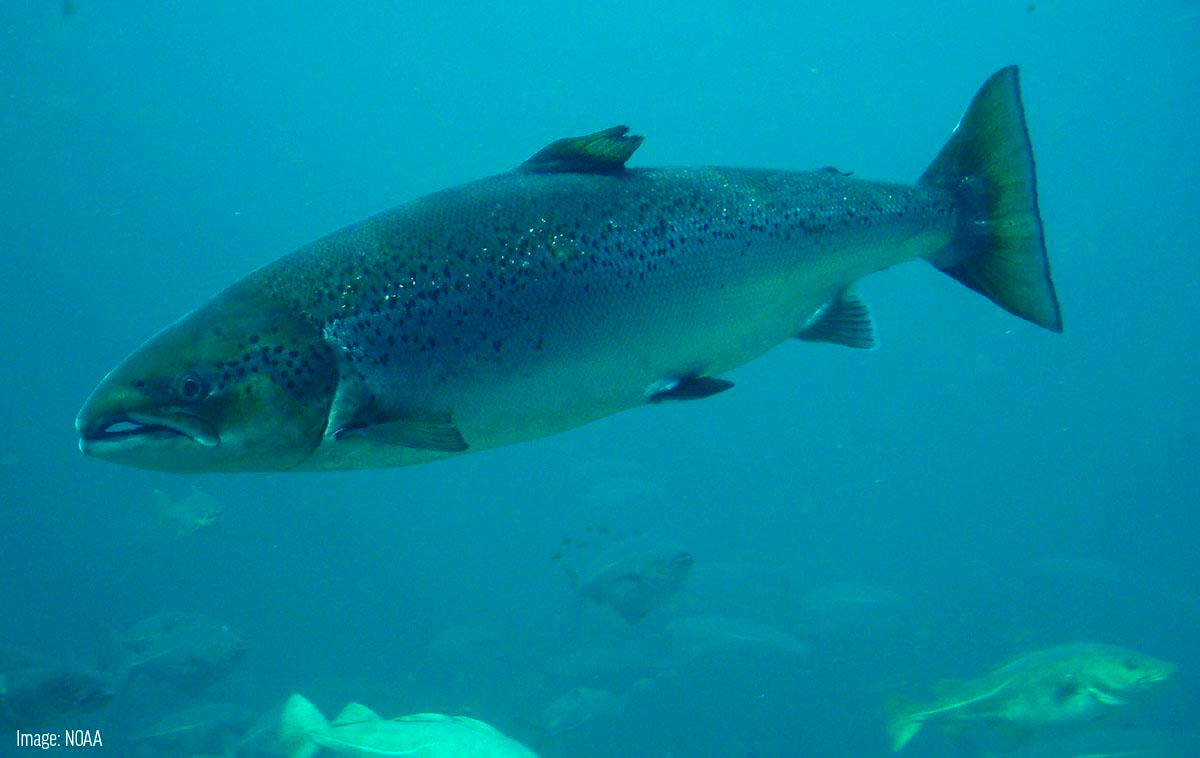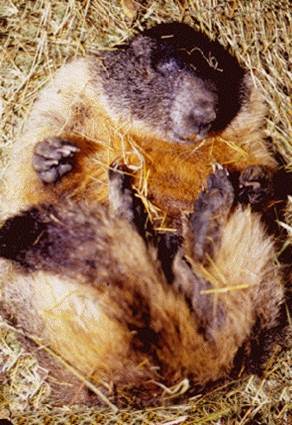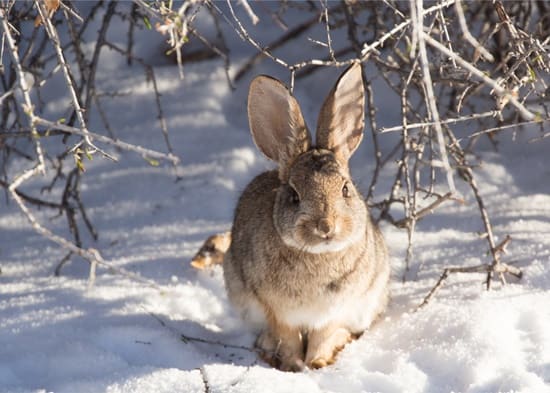
How incomprehensible, wavering, and misty are the beings that share with us the sight of the stars and the warmth of the sun.
Joseph Conrad (1857-1924)
Lord Jim (1900) Chapter 16
Earth is a planet of climatic extremes. In the hottest locales ambient air temperature can approach the boiling point of water. In the coldest, -60° Fahrenheit, well below the freezing point of body fluids, is as warm as it gets. Amazingly, life is found at both ends of the scale.
Thermoregulation, the ability of animals to deal with the stresses of heat and cold, is a beautiful example of the integration of neural, physiological, and behavioral responses to produce a precise, tightly-controlled mechanism that's vital to long- and short-term survival both of individuals and species. It's important for hunters to understand how it works.
Why Bother?
One fundamental question that has to be addressed is why animals thermoregulate in the first place. It's a lot of work, it requires a constant (if unconscious and automatic) monitoring of the environment, and considerable expenditure of metabolic energy. That it's crucial is obvious, though, so let's look at the underlying reason why it has to be done. Life is maintained by a constant and consistent series of intracellular chemical reactions, catalyzed by a vast array of specialized enzymes. Biochemistry is subject to the same influences as any other chemistry, the most important of which is temperature.
All other things being equal, as the temperature of a "reaction vessel" (an animal, for example) is increased, the speed of the reaction increases in proportion. This is no less true of chemical reactions in cells than those in test tubes. The innumerable reactions that occur in cells aren't just random events; they're coordinated into a series of long and tortuous pathways linked in complex and interdependent webs. Each part of the path requires the completion of the previous step before the next can begin. If even a single reaction in a single pathway occurs too rapidly or too slowly, the rest of the pathway is adversely affected.

Too fast a reaction "upstream" in the sequence may lead to buildup of product, with consequent inability to complete of the next step. To use an analogy, factories use the principle of "just in time delivery" to avoid having extra parts lying around, because it's costly and causes a slowdown of the production line. The same is true for biochemical pathways. The metabolic energy "stored" in excessive product is essentially a needless cost to be borne. Conversely an "upstream" reaction that's too slow will cause "downstream" events to be deprived of raw materials.
What's worse, other pathways depend on the final product of a given reaction series. Inefficient production inevitably affects those. Again, to use the factory analogy, if there are millions of assembly lines, all of them mutually interdependent, everything has to be exactly synchronized or the whole thing stops.
The enzymes that control all the steps of these reactions are very specific catalysts. A given enzyme has one function in one pathway, and does nothing else. They're specialized tools; an enzyme's structure is such that it usually can operate only over a limited temperature range. Typically a given enzyme will work best within a very narrow segment of that range. Each enzyme has an optimum temperature it "prefers," at which the reactions it catalyzes go smoothly. Hence there's a point at which the whole machine runs properly. We call that the "normal" body temperature. To a large extent that's species specific. A human has a nominal body temperature of 98.6° Fahrenheit; other animals differ by a few degrees, but whatever the optimum temperature may be, there are mechanisms to keep it there. Perturbations of body temperature can produce a wide array of malfunctions by forcing enzymes to work far outside their optimal range—which may be only a degree or so in either direction. Hence close regulation of body temperature is an absolute necessity.
Balancing The Energy Budget
 Thermoregulation has two complementary and conflicting facets: not only must animals cope with loss of body heat to a cooler environment, they've got to control input of energy from a too-hot one as well. The key to understanding the process is grasping how energy moves through the animal; what physiologists call the "organismal energy budget." Like balancing a bank account, income has to equal outflow. If energy "deposits" from various sources and "withdrawals" to cover the metabolic costs of different activities aren't balanced, things go awry. Essentially animals are black boxes capable of trapping and storing energy, using that energy to control various metabolic functions. All biology is chemistry; and ultimately, all chemistry is physics. A basic understanding of the physico-chemical aspects of energy flow is necessary to discussing the energy budget in animals.
Thermoregulation has two complementary and conflicting facets: not only must animals cope with loss of body heat to a cooler environment, they've got to control input of energy from a too-hot one as well. The key to understanding the process is grasping how energy moves through the animal; what physiologists call the "organismal energy budget." Like balancing a bank account, income has to equal outflow. If energy "deposits" from various sources and "withdrawals" to cover the metabolic costs of different activities aren't balanced, things go awry. Essentially animals are black boxes capable of trapping and storing energy, using that energy to control various metabolic functions. All biology is chemistry; and ultimately, all chemistry is physics. A basic understanding of the physico-chemical aspects of energy flow is necessary to discussing the energy budget in animals.
The ultimate source of life is radiant solar energy. Plants obtain energy directly from the Sun; animals usually obtain it indirectly because light energy is converted to chemical energy in plants. That chemical energy is stored in food; when food is digested the energy is released and used to form chemical bonds in animal proteins, lipids, and carbohydrates. As we'll see, many animals also use the Sun's energy directly, too.
Many metabolic reactions are exothermic : i.e., they release energy from the breakage of chemical bonds as they proceed. Typically this energy is recaptured, and used to drive other, endothermic, reactions, those requiring energy input. Since no process is 100% efficient, while most of the energy is recaptured, some proportion of it isn't; the laws of thermodynamics dictate that the "lost" energy is converted to body heat. This internal heat source is the principal factor that determines what an animal's body temperature may be. For one category of animals the excess energy derived from diet is the principal source of body heat; but for another it's only a relatively minor one. It's important to emphasize that all animals generate internal body heat, but some are more efficient at it than others.
Who's "Hot" And Who's Not
Everyone has heard the terms cold-blooded and warm-blooded. The general impression is that "cold-blooded" animals don't regulate their body temperature, while "warm-blooded" animals do. This idea is incorrect. The truth of the matter is that even what we traditionally call "cold-blooded" animals—fish, reptiles, and amphibians—have a very substantial capacity to maintain their body temperatures within a narrow range (given normal conditions) despite a low level of internal heat production. Their thermoregulatory mechanisms may be more dependent on external heat sources, but that doesn't mean they don't work. In fact they are typically more complex and elegant than those of "warm-blooded" mammals and birds. In "warm blooded" animals basal metabolic rates are normally high enough to produce heat far in excess of their metabolic requirements.
"Warm-blooded" and "cold-blooded" are vague and rather imprecise terms. It's more accurate to say that animals producing sufficient internal heat to maintain their body temperature within very narrow limits are endothermic ; the equilibrium they achieve with the external environment is termed homeothermy (from the Greek for "same temperature"). Only mammals and birds are homeotherms, i.e. they're the ones we call "warm-blooded."
But in fact most species aren't capable of homeothermy. Exothermic reactions occur in fish, reptiles and amphibians, but heat production is far lower than it is in mammals or birds of similar size. Furthermore, none of these groups have—as mammals and birds have—evolved effective insulating coverings such as hair, feathers, or blubber. They are "ectothermic," meaning that they derive their body heat from sources outside their bodies. Generally ectothermic species are relatively small animals living in environments that act as limitless heat sinks.
Exceptions to this statement exist: since heat loss in all animals is proportional to the ratio of body size and surface area, very large ectothermic animals may lose internally-produced heat slowly compared to smaller ones. It's almost certain that the largest dinosaurs were close to being true homeotherms, despite their reptilian nature; they lost heat slowly thanks to a favorable surface:volume ratio. They they could generate it faster than it was dissipated. A similar situation is known to occur in some of the very large pelagic fishes, such as tuna. Their inner body temperature is usually substantially higher than ambient, thanks to constant muscle contractions in swimming. They're fully active at environmental temperatures smaller fishes can't tolerate.

A more familiar situation to most of us is a frog or a turtle in a pond. These animals are tiny, ineffective heat generators incapable of raising the temperature of the infinitely large mass of water in which they live. So internal heat production can't work for them. To thermoregulate they need external input, and hence are ectothermic. Ectotherms commonly can tolerate considerably more fluctuation in body temperature than mammals or birds can, a strategy called poikilothermy. They're not exempt from the rule that their enzyme pathways require tight control, but they often have several "variations" of any given enzyme, to permit operation over a wider range of body temperatures. Since an ectotherm's body temperature is usually variable, tending to closely track ambient conditions, most ectotherms have evolved behavioral thermoregulatory strategies to take advantage of variations in their surroundings; and biochemical ones for times when these fail. If you've ever spent time in an Eastern forest in the Spring, when air temperatures are low but the Sun is shining, chances are you've seen a lizard or a snake "basking" in the sun. This is the classic example of behavioral thermoregulation.
Inside, Outside
Consider the nature of the problem: in Spring most animals start to breed, and a fair amount of energy is required to do that. Prey has to be hunted, predators have to be avoided, mates have to be found, eggs have to be produced. The snake sunning himself is letting Nature do a large part of the job of maintaining his body temperature by absorbing solar energy directly, warming his tissues and organs to permit efficient function.

The position he takes on the rock is typically related to the level of input he needs. If he's feeling chilly and sluggish he'll orient himself so as to get the maximum surface area exposed to the warming rays. If the air is warm and he needs less radiant input, he may orient himself with his long axis in line with the Sun. The position an ectothermic (and poikilothermic) animal takes with respect to a radiant heat source is usually quite precisely calculated. It will depend on the distance from the source, the radiant body's temperature, and the heat loss to which he's subjected.
That rock under the snake is an important part of the equation: if it's cooler than the snake wants/needs to be, it's a heat sink, a source of conductive loss from contact. If it's warm, he gains heat from it, by conduction. In Summer, when the air temperature is high and the Sun beats down, the rock may well become too hot for the snake's comfort. The external input can get too high so the snake's behavior changes, to seek out cool microenvironments in which the gain and loss of heat can be balanced properly. In most complex habitats, there's a sufficient variety of microenvironments to allow this.
All reptiles thermoregulate this way. To complement this process many have developed special anatomic features to exploit heat sources and sinks effectively. The large membranous dorsal "fins" on some lizards for example, are such structures. The thin translucent flesh between the spines the site of thousands of capillary beds. By raising the fin and exposing it to the sun, heat energy is directly absorbed into the blood flowing through these capillaries. This heat is then transferred to the iguana's internal regions, using the liquid blood as a transport medium. This is actually a very efficient way of making use of direct solar input.
It can work both ways, too: the fin can also serve as a radiating device to cool the animal. By sending warm blood through the capillaries when the ambient temperature is low, heat can be "blown off" into the environment. Blood flow is controlled by neural input that shuts capillary beds on and off as needed. Control of internal temperature for lizards like this is remarkably precise, tracking the optimum by a degree either way under most conditions.
Aquatic environments present a special challenge. Air is a rather inefficient heat sink, but water is a very effective one. Even large and highly endothermic homeotherms can get into trouble in water that's too cold: humans who fall into icy water can lose heat so rapidly that body temperature falls faster than their metabolism can crank up to replace it, and they undergo hypothermia, a very dangerous condition of lowered body temperature. Mammals and birds are so dependent on absolute control of their body temperature that hypothermia quickly gets them into serious trouble: the brain shuts down blood circulation to the extremities, then unconsciousness ensues. If the loss is rapid enough the individual will die very rapidly, far faster than he might by drowning. In World War Two, sailors torpedoed in the icy wintertime North Atlantic, if not immediately rescued and warmed, had a survival time measured in minutes.
Aquatic reptiles and amphibia by necessity have evolved behavioral thermoregulation to a high degree. A frog on a lily pad or a turtle sunning himself on a fallen tree are familiar sights, and they're doing exactly what the snake does on land: maximizing the balance of input and output of energy to maintain optimal body temperature. As is the case with terrestrial animals, there are usually complementary anatomic or physiological mechanisms to increase the efficiency of this process. A frog half-submerged in water at the edge of a pond is gaining radiant heat above the surface of the water, and losing it by convection and/or conduction below it. He'll also seek out water whose temperature is to his liking, just as the land-bound snake seeks an appropriate microclimate.
What about fish? They're the ultimate "thermal conformers." Since they can't live outside water, they have far less opportunity for behavioral control, and their internal temperature will closely track the local environment. But even fishes aren't helpless in this respect. Like any vertebrate they can sense the local temperature; being highly mobile they can choose places in the water where the temperature suits them. A free-swimming fish in a shallow river on a hot sunny day is very likely to be found under the shade of an overhanging tree; when it's cooler and overcast he's probably more liable to be found swimming in open water. In large, deep natural environments thermal stratification of the water column is normal, so fish can choose a depth at which the temperature is optimal.
Pushing The Envelope
In the final analysis, there are limits to any species' ability to thermoregulate. These limits define not only where in a given locality specific individual specimens can be found, they define the broad climatic range within which the species can be found around the globe. Those limits are set by what the biochemical capabilities of the animal are, and how flexible its response can be at the cellular level.
It's not an accident that mammals and birds are found in virtually every climate regime, no matter how extreme, that Earth presents. Deserts, jungles, the depths of the ocean, the ice sheets of the Poles, all are home to homeotherms. Their internal chemical pathways for capturing energy from their diet and using it to maintain a constant body temperature are exceptionally efficient; their external coverings of hair and feathers provide excellent protection against cold and heat. So long as an adequate caloric level—fuel for the internal furnace—is available, their systems can be maintained in equilibrium despite a steep thermal gradient between core body temperature and the external environment. This thermoregulatory strategy is fundamentally biochemical and internal in nature. The downside to it is that animals in extreme climatic conditions have only limited alternative strategies to deal with stress. As the example of hypothermia shows, once they get pushed outside the "design limits" of the system they're in trouble.
At first glance the behavioral strategy on which most ectotherms rely would seem to be less efficient and more prone to putting the individual in danger. But here again there is some reserve capacity: while homeotherms use behavioral thermoregulation only as a secondary means of dealing with extreme stress, ectotherms use biochemical adaptations as backup to their primarily behavioral approach. And they have evolved some very effective alternatives.
It's a little too simplistic to assume that only one form a specific enzyme exists. Most pathways can be driven by variety of enzymes with essentially the same function, but with varying temperature optima. These are isozymes.

Isozymes are variant enzymes whose DNA blueprint is stored in the genome but not activated until needed. A very good example is found in fishes: the Atlantic salmon (Salmo salar) can be found in a wide variety of habitats, and therefore the fish can encounter a broad range of external temperatures. Atlantic salmon can acclimate to water of different temperatures by shifting production of crucial enzymes from one form to another. When they migrate from the sea to freshwater (where the temperature change can easily be as much as twenty degrees) production of the cold-water isozyme will be switched off and the warmer-water isozyme switched on. The transition is approximately synchronized so that when the warmer summer environment is reached the warm-water form is fully in place and there is no loss of function.
The goldfish (Carassius auratus) is another species that's exceptionally tolerant of different temperatures. Given time to acclimate they can survive in water cold enough to have a scum of ice on the top, or in the near-bathwater temperatures of Southern stock tanks. Many other ectotherms have this ability, which greatly extends the range of the species and the time of year during which its active.
Other species lack it. Tropical animals in particular (especially salt-water tropical fishes and amphibia from warm humid regions) tend to be very sensitive to and pretty intolerant of significant variations in external temperature. These species have evolved over millennia in stable environments: in the process they've lost a lot of the capacity to synthesize a broad array of isozymes. They're typically quite fragile and sometimes frustrating for the hobbyist whose understanding of their needs is incomplete.
Another strategy often encountered, especially in cold climates, is "escape" in the form of dormancy. Since the body chemistry of ectotherms is affected by temperature, as the animal cools, its metabolic rate drops as well. When that happens turnover of nutrients declines, internal heat generation is throttled back to minimum, physical activity (and the heat it generates from exercise) drops to near-zero, and the animal goes into a state of torpor that may last for days to months, depending on local conditions and the species in question. Many reptiles do this: snakes in northern forests are almost never seen in Autumn, and not at all in Winter because it's simply too cold to survive. So they hibernate. Frogs and  other amphibians will bury themselves in mud, drop their metabolic rate to nearly nothing, and spend the winter in a state of suspended animation at the bottom of ponds, where the water doesn't freeze. A frog in this condition is as close to being dead as it is possible to get without crossing over the line. Even more remarkably, a few species elaborate biological "antifreezes," something no mammal is known to do. A few species of Arctic fishes switch on genes that elaborate substances that lower the freezing point of their blood so that they can swim and survive even in the presence of ice.
other amphibians will bury themselves in mud, drop their metabolic rate to nearly nothing, and spend the winter in a state of suspended animation at the bottom of ponds, where the water doesn't freeze. A frog in this condition is as close to being dead as it is possible to get without crossing over the line. Even more remarkably, a few species elaborate biological "antifreezes," something no mammal is known to do. A few species of Arctic fishes switch on genes that elaborate substances that lower the freezing point of their blood so that they can swim and survive even in the presence of ice.
No mammal can do what a frog does but some come close: hibernating ground squirrels, such as the woodchuck (Marmota monax) can allow their body temperature to fall as low as 6° Celsius, just a few degrees above freezing. They may spend weeks in almost complete torpor. Rather than putting the fire of life completely out, hibernation is a condition in which a "pilot light" is kept burning at a minimum but measurable level. If a hibernating mammal cools too much he'll awaken, because ice formation in the cells of the body is lethal. This doesn't happen in ectothermic hibernators; most of these find an ice-free place to spend the winter.
Only a few animals can hibernate: bears, despite the popular image, don't truly hibernate at all. They sleep a lot in Winter as a way to conserve energy and the fat they've stored up in the fall, but unlike the true hibernators they aren't all but dead. A bear will arouse if he's disturbed; find one in winter and poke him with a stick, and see what happens! A woodchuck on the other hand, won't arouse much if at all. You could practically use him as a bowling ball before he'd be aware that anything was happening.
 It's far more common for non-hibernating mammals to use behavioral means to deal with cold: everyone has seen rabbits sitting in the sun in the snow. The smart rabbit hunter knows that if he walks stealthily along brush piles and hedgerows on such a day when the sun's out but the temperature is low, he'll encounter bunnies. They like to sit where they can escape into cover, but at the same time they need that extra thermal input. Other species can migrate to warmer areas when cold gets too intense.
It's far more common for non-hibernating mammals to use behavioral means to deal with cold: everyone has seen rabbits sitting in the sun in the snow. The smart rabbit hunter knows that if he walks stealthily along brush piles and hedgerows on such a day when the sun's out but the temperature is low, he'll encounter bunnies. They like to sit where they can escape into cover, but at the same time they need that extra thermal input. Other species can migrate to warmer areas when cold gets too intense.
An avoidance strategy is also effective in hot climates. Desert reptiles can avoid the brutal daytime sun by going underground during the day, emerging only at night when temperatures fall and thermoregulatory mechanisms can cope with the load. Activity during the day would subject them to such a colossal heat input that their metabolic rates would be driven far beyond the optimum level. The commonly observed phenomenon that poisonous snakes are more apt to strike on a hot day is simply due to the fact that they're literally "on the edge" of their thermal envelope, and any activity is exaggerated. Another advantage to this tactic is that the prey desert reptiles hunt—small mammals, usually—do the same thing. When both emerge into the cooler night the prey has to be very cautious to avoid getting eaten!
Even humans use the avoidance strategy: at one time I lived in India, and in the glare of the Indian sun I found myself—quite without thinking about it—walking on the shaded side of the street!
|OPENING PAGE|
|SEASON LOGS |
| HUNTING | GUNS | DOGS |
| FISHING & BOATING | TRIP REPORTS | MISCELLANEOUS ESSAYS |
| CONTRIBUTIONS FROM OTHER WRITERS|
| RECIPES |POLITICS |